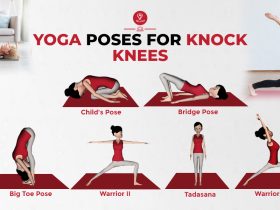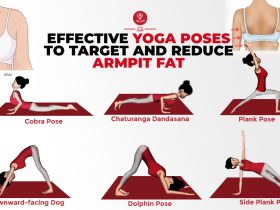
Yoga is often associated with an activity that balances your body and mind, as much as it is about stretching and opening muscles, it is also about strengthening them. It provides many benefits for strength, flexibility, balance, and posture. Combining yoga for butt sequence with targeted glute exercises and a cardiovascular workout can make for a well-rounded fitness routine to sculpt and tone your buttocks.
While yoga may not be as intense as weightlifting or high-impact exercises for muscle hypertrophy, regular yoga practice can lead to improved muscle tone in the buttocks. Engaging and contracting the glute muscles in various poses helps promote muscle firmness and definition.
Here are some poses of yoga for butt (Buttocks) that can help in sculpting and toning your buttocks.
Yoga For Butt (Buttocks)
There are several yoga poses that can help strengthen and improve the appearance of the glutes as well. begin your yoga booty workout with these 6 poses.
Warrior II (Virabhadrasana II)
Step your feet wide apart, with one foot facing forward and the other foot turned out to the side. Bend your front knee while keeping your back leg straight. As you sink into the lunge, engage your glutes. Repeat on the other side.
Squats (Malasana)
Squats are excellent for targeting the glute muscles. Stand with your feet shoulder-width apart and lower your body by bending your knees and pushing your hips back. Keep your chest up and back straight. Return to the starting position by pushing through your heels. To target your glutes even more, you can try sumo squats or jump squats.
Bridge Pose (Setu Bandhasana)
For Bridge Pose lie on your back with your knees bent and feet flat on the floor. Press your feet into the ground, lift your hips, and squeeze your glutes as you lift your body into a bridge position. Hold for a few breaths and slowly lower back down.
Chair Pose (Utkatasana)
For Chair Pose stand with your feet together and raise your arms overhead. Bend your knees and lower your hips as if you’re sitting back into an imaginary chair. Engage your glutes as you hold the pose for several breaths.
Crescent Lunge (Anjaneyasana)
Crescent Lunge is a dynamic pose that targets the glutes. Start in a lunge position with your right foot forward. Lift your torso and raise your arms overhead. Sink deeper into the lunge, engaging your glutes. Hold the pose for a few breaths and repeat on the other side.
Hand-to-Big-Toe Pose (Utthita Hasta Padangusthasana)
Begin standing with your feet together. Shift your weight onto your left foot and find your balance. Bend your right knee and reach down with your right hand to grab hold of your right big toe. Once you have a grip on your right big toe, extend your right leg forward, keeping it straight. If you feel stable, you can start to straighten your right leg out to the side, keeping it parallel to the ground.
Conclusion
Yoga can be a beneficial practice for strengthening and toning the buttocks, although it may not be as targeted as specific strength training exercises.
Yoga poses often involve holding positions for an extended period, which builds muscle endurance. Holding poses like Chair Pose, Warrior II, or Crescent Lunge (Anjaneyasana) can challenge the buttocks and help build their endurance.
RELATED ARTICLES
May 20, 2025
Kegel Exercises: Strengthen Your Pelvic Floor for Better Health
Kegel exercises strengthen the pelvic floor muscles, which support the uterus, bladder, small intestine and rectum. Strengthening these muscles improves[...]
Oct 06, 2024
Balance Your Body: Yoga Poses For Knock Knees (Genu Valgum)
Knock knees, or “genu valgum,” is a condition in which the knees touch each other while the ankles remain apart.[...]
Sep 20, 2024
Effective Yoga Poses to Target and Reduce Armpit Fat
Fat accumulation under the arms is a common problem for many women, which is often considered an important part of[...]
RECENT POSTS
Disclaimer
The content is purely informative and educational in nature and should not be construed as medical advice. Please use the content only in consultation with an appropriate certified medical or healthcare professional






